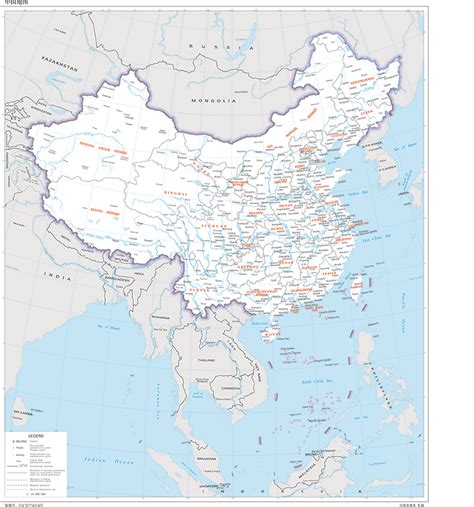what are the four big rivers in china ,most important rivers in China,what are the four big rivers in china,Yangtze River is the largest and longest river in China, Yellow River the 2nd longest, Pearl River is the biggest in South China.
I'm confused about celine labels. Both on handbags and on clothing /scarves Not sure where to post this. I have seen handbags on ebay, etsy etc without the accent. . and clothing tags of all sorts wiyhout accents. I also have a monogrammed hoodie in question. So my understanding is.

China is home to some of the world’s most famous and important rivers. These rivers have shaped the country’s geography, economy, and culture for thousands of years. Among these rivers, four stand out as the most significant. Known as the "Four Big Rivers of China," these waterways have not only provided vital resources for the country but have also been the cradle of Chinese civilization. The four rivers are the Yangtze River, Yellow River, Pearl River, and the Heilongjiang River. In this article, we will delve into the details of these four rivers, their history, significance, and roles in modern-day China.
1. Yangtze River (Chang Jiang)
Length: 6,300 km (3,917 miles)
Origin: Tanggula Mountains, Qinghai Province
End: East China Sea, Shanghai
The Yangtze River, known as the Chang Jiang in Mandarin, is the longest river in China and Asia, as well as the third-longest river in the world. Stretching a massive 6,300 kilometers (3,917 miles) from its source in the Tanggula Mountains in the Qinghai-Tibet Plateau, the Yangtze flows eastward through 11 provinces and eventually empties into the East China Sea at Shanghai.
# Economic and Cultural Importance
The Yangtze River has long been a cornerstone of China’s agricultural and industrial development. The river basin is home to one of the most fertile and densely populated regions in the world. It is often referred to as the "cradle of Chinese civilization," as it played a central role in the rise of several ancient Chinese dynasties. The fertile plains around the Yangtze provided abundant resources for agriculture, while the river served as a natural transportation route for goods and people.
The river is also significant in China’s modern economy. Major cities such as Wuhan, Nanjing, and Chongqing lie along its path, making it a key economic corridor for the country. The Yangtze River also hosts China’s most ambitious engineering projects, such as the Three Gorges Dam, the world’s largest hydroelectric power station, which provides both power and flood control to the surrounding regions.
# Environmental Concerns
While the Yangtze River has greatly benefited China, it is also facing significant environmental challenges. Water pollution is one of the most pressing issues, with industrial waste, agricultural runoff, and untreated sewage entering the river. Additionally, the construction of dams has led to habitat loss for several species, including the Yangtze giant softshell turtle, which is on the brink of extinction.
2. Yellow River (Huang He)
Length: 5,464 km (3,395 miles)
Origin: Bayan Har Mountains, Qinghai Province
End: Bohai Sea, Shandong Province
The Yellow River, or Huang He in Mandarin, is the second-longest river in China. It flows for about 5,464 kilometers (3,395 miles) from its source in the Bayan Har Mountains in the Qinghai-Tibet Plateau and drains into the Bohai Sea in Shandong Province. Often called the "cradle of Chinese civilization," the Yellow River has been the birthplace of many of China’s ancient dynasties, especially during the Xia and Shang periods.
# Economic and Historical Significance
The Yellow River is historically important because it was the site of some of the earliest human settlements in China. The fertile plains surrounding the river supported early agricultural societies, particularly the cultivation of wheat and millet. The river basin remains one of the most productive agricultural regions in China, even today.
However, the Yellow River is infamous for its frequent and devastating floods, which have claimed millions of lives throughout history. The river has been nicknamed "China’s Sorrow" because of the destructive floods that have altered the course of the river and caused widespread damage. As a result, extensive flood control measures, including levees and reservoirs, have been built over the centuries to manage the river’s unpredictable behavior.
# Environmental Issues
One of the major problems with the Yellow River today is its decreasing water flow. The river’s course is heavily dependent on the melting of snow from the Tibetan Plateau and monsoon rains. Due to increased water consumption for irrigation, industrial use, and urbanization, the Yellow River has faced long periods of drought, especially in its lower reaches, where it has sometimes dried up completely before reaching the sea. Furthermore, water pollution from agricultural runoff and industrial waste has worsened the river’s health.
3. Pearl River (Zhu Jiang)
Length: 2,400 km (1,491 miles)
Origin: Yunnan–Guizhou Plateau

what are the four big rivers in china Spotting a fake Celine bag requires a keen eye for detail and an understanding of the brand’s commitment to quality and craftsmanship. By closely inspecting the logo, stitching, leather quality, hardware, lining, and packaging, .
what are the four big rivers in china - most important rivers in China